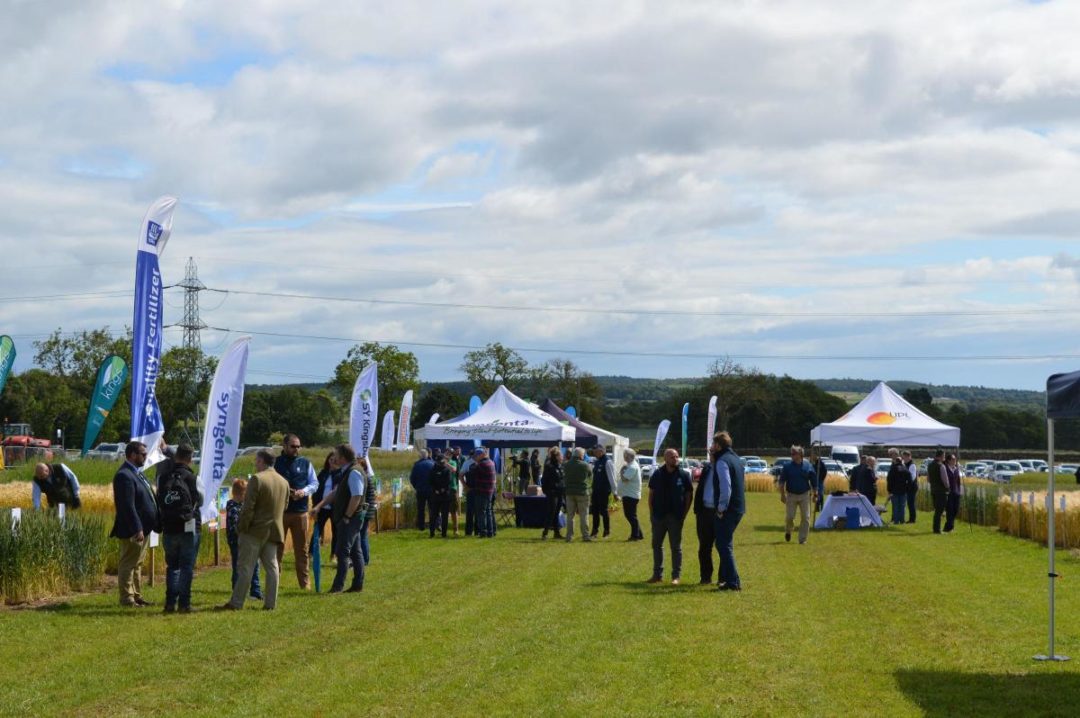Scotland's premier arable event, Arable Scotland, was hailed a huge success after making a glorious return for it's second year following cancellations throughout the Covid-19 pandemic.
Held at Balruddery Farm, near Dundee, the event is organized and hosted by the James Hutton Institute in partnership with Scotland's Rural College and AHDB, and welcomed leading arable exhibitors including Syngenta UK, Bayer CropScience, LG Seeds and RSABI.
With demonstration plots present to showcase the latest research and technological advances in arable cropping – including new crops, varieties and integrated pest management – visitors were also able to partake on plot tours during the day and speak to representatives of the companies and research organizations present at the event.
In conjunction with the tours, the event hosted a selection of 'Arable Conversations', welcoming interactive discussions between a panel of experts and the audience to share views and explore solutions to environmental and financial sustainability issues facing the industry – with the drive for net-zero being one of the key topics discussed on the day.
So how can land managers improve biodiversity while reducing carbon, and are there solutions that can deliver both?
"We need to look at how we can take our policy forward and how we integrate the measurement of greenhouse gas emissions and biodiversity gain into farming businesses in a way that farmers can understand and engage with. One of the key ways we're trying to target this is through our national test program, however, we're also working with NatureScot with some of the other piloting approaches to how we measure on-farm biodiversity gain across the different agriculture sectors including arable, dairy and upland systems to name a few," commented the Scottish Governments's head of agricultural policy, John Kerr.
In response to John Kerr, director of the James Hutton Institute, George Lawrie added: "There's an array of things we can do to enhance biodiversity but make sure that we have food production at the corner stone of that policy. I plea to the Scottish Government to make sure the policy is right as farmers want to continue farming and we want to continue to improve biodiversity.
"There's areas of farming we can look at that can deliver biodiversity on a larger scale and will still allow us to go ahead and undertake mainstream farming. One aspect that farmers need to focus on is unproductive land and headlands, but the policy has to be there to deliver these sort of advantages," he continued.
With policy in place, is it too much to ask if farmers can have their cake and eat it? With the introduction of regenerative approaches to arable farming and with reduce costs promised to be a benefit if the switch is made, is productivity suffering as a result? That was the question put to David Aglen of Balbirnie Farms, Fife who is trying to follow the principles of regenerative agriculture.
"I think at worst we've maintained production in the long run but if we're clever enough we can improve it. We are hosting the AHDB strategic cereals and oilseed event at Balbirnie, and currently we're running trials on how to reduce fungicide usage and relying on biology to maintain good soil health to get similar yields," stated David Aglen, adding that he has started using urea as a nitrogen source sprayed over the plants which he believes improves nitrogen efficiency.
"As we moved to direct drilling, our crops did take a dip in yield as we transitioned but now we're coming out the other side, I can't give you a reason as to why we can't operate on the same level, if not better, than we were beforehand. Farmers are not going to have a choice – we're losing the battle with disease and weeds, as well as struggling to fight resistance and pests so farmers are going to have to think differently in order to survive."
"The game has changed from the 1990s through to the current year and the whole context for farming has taken a different approach. I think we need a different mindset for how we breed varieties in the future due to the issues regarding disease and resistance, and because we need to think about diversity in the system – which can be achieved through inter-cropping which enhances biodiversity in the field whilst reducing inputs at the same time," added Dr Ali Karley of the James Hutton Institute.
One worry that was made clear from farmers interested in participating in a regenerative approach was the issue of direct- drilling. With policy rewarding those for implementing a no-till method, is the old-age approach of ploughing really something that farmers can wave goodbye to and is it something that can be implemented to all arable systems across the country. Leven-based regenerative arable farmer, Doug Christie of Durie Farm, responded:
"I've used the direct drilling approach as a way of ultimately reducing costs. Prior to moving away from ploughing, I was finding that my soil was becoming increasingly heavier and harder to break down – there was no structure to the soil whatsoever. I'm not opposed to ploughing in the spring when the ground isn't saturated and either leave the ground in stubble or in a cover crop throughout the winter. It's not the total answer but I think it can help build soil structure. However, you can't move to a no-till system without changing your rotation, whether that be introducing a cover crop or integrating livestock back into the system – it will not work in isolation."
The No-Till Passport series is brought to you by Martin Industries.
Since 1991, Martin Industries has designed, manufactured and sold leading agriculture equipment across the U.S. and Canada. Known for Martin-Till planter attachments, the company has expanded to include a five-step planting system, closing wheel systems, twisted drag chains, fertilizer openers and more in their lineup. Their durable and reliable planter attachments are making it possible for more and more farmers to plant into higher levels of residue.







